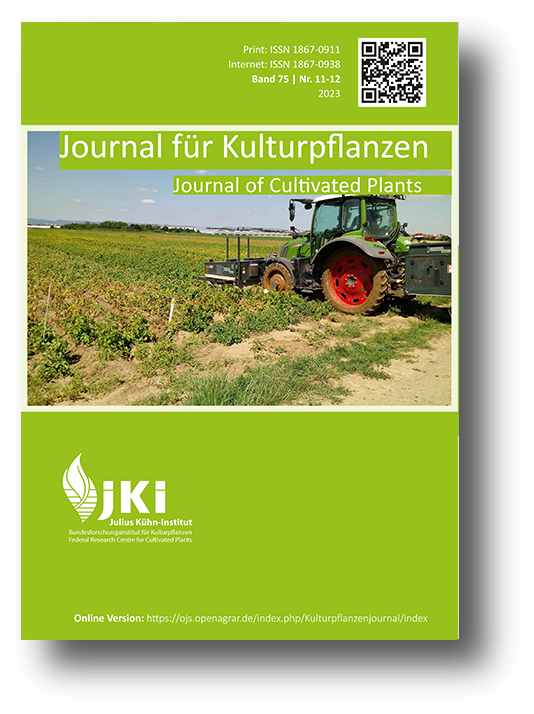Experiences with electrophysical desiccation in early potatoes from Rhineland-Palatinate
DOI:
https://doi.org/10.5073/JfK.2023.11-12.02Keywords:
Solanum tubersoum L., peel strength, tuber quality, heel end necrosis, vascular discoloration, electrophysical vegetation controlAbstract
Electrophysical desiccation of early potatoes was tested as a non-chemical tool to reduce herbicide use. Therefore, the XPower device (Zasso®) was tested at three sites (Rhineland-Palatinate) in three trial years (2020–2022) with two driving speeds and in combinations with chemical and non-chemical desiccation tools. In addition, the role of N-fertilization and irrigation on the efficacy of electrophysical desiccation was analyzed. At 3 km h-1 driving speed, a higher level of leaf and stem necrosis was obtained compared to 6 km h-1 driving speed. The level of leaf and stem necrosis was comparable to chemical desiccation. The peel of the tubers was hardened in all desiccation treatments 14 days after desiccation. The occurrence of heel end necrosis in the electrophysical treatment was significantly reduced by increasing the driving speed and irrigation prior to desiccation.
Published
Issue
Section
License
Copyright (c) 2023 Benjamin Klauk, Maria Rosenhauer, Jan Petersen

This work is licensed under a Creative Commons Attribution 4.0 International License.
The content of the journal is licensed under the Creative Commons Attribution 4.0 License. Any user is free to share and adapt (remix, transform, build upon) the content as long as the original publication is attributed (authors, title, year, journal, issue, pages).
The copyright of the published work remains with the authors. The authors grant the Journal of Cultivated Plants, the Julius Kühn-Institut and the OpenAgrar repository the non-exclusive right to distribute and exploit the work.







